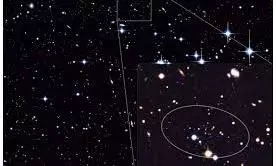
Discovery of smallest-ever galaxy challenges understanding of evolution
text_fieldsAstronomers have identified the smallest and faintest galaxy ever observed, Andromeda XXXV, located approximately 3 million light-years away.
This remarkable discovery challenges existing models of galaxy formation, as scientists previously believed that galaxies of this size would not have survived the harsh conditions of the early universe.
Andromeda XXXV is part of a group of small satellite galaxies orbiting the Andromeda galaxy. Unlike previously discovered dwarf galaxies, this one is unusually small - stretching only about 1,000 light-years across at its longest axis.
A study published in The Astrophysical Journal Letters confirmed its existence through data from multiple astronomical surveys and observations from the Hubble Space Telescope.
Eric Bell, a professor at the University of Michigan, described Andromeda XXXV as "a fully functional galaxy, but about a millionth the size of the Milky Way." What makes it even more intriguing is its ability to sustain star formation despite its tiny size, a phenomenon that puzzles researchers.
Dwarf galaxies, though common, are notoriously difficult to detect due to their faint brightness. While the Milky Way has several known satellite galaxies, finding similar structures around Andromeda has proven challenging. Most previously identified dwarf galaxies near Andromeda were larger and brighter, aligning with existing galaxy evolution theories.
However, Andromeda XXXV stands out due to its prolonged period of star formation.
Lead researcher Marcos Arias noted that while some similarly sized galaxies near Andromeda formed stars up to 6 billion years ago, most of the Milky Way’s satellite galaxies stopped forming stars around 10 billion years ago.
Scientists are now investigating how Andromeda XXXV managed to survive in an environment that was expected to strip small galaxies of the gas necessary for star formation. Eric Bell compared the conditions of the early universe to "a vat of boiling oil," where galaxies like this were thought to have been destroyed.
The fact that Andromeda XXXV endured suggests that current models of galaxy evolution may need to be revised.























